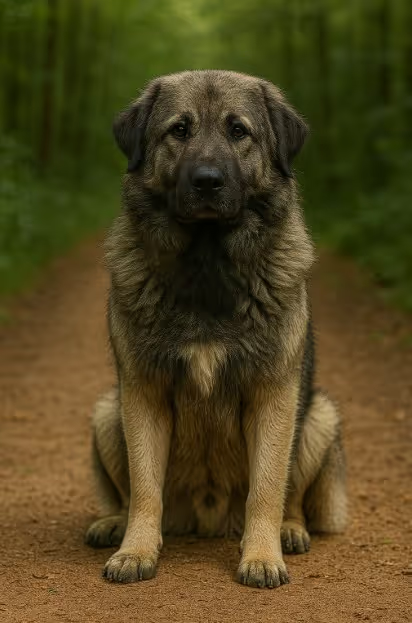The Sarplaninac (pronounced shar-pla-nee-natz) is a powerful, devoted, and highly protective livestock guardian breed from the mountainous regions of the Balkans. Bred for centuries to defend flocks against wolves, bears, and human predators, this large, noble dog combines strength, intelligence, and unwavering loyalty. Calm and affectionate with family, yet naturally wary of strangers, the Sarplaninac thrives in rural homes where it can live and work with purpose.

The Sarplaninac originated in the Šar Mountains (Šar Planina) of Kosovo, North Macedonia, and Albania. Shepherds developed the breed to guard sheep and goats in harsh, predator-rich environments. Recognized for their bravery and independence, Sarplaninacs were an essential part of rural Balkan life. The Fédération Cynologique Internationale (FCI) recognized the breed in 1939 under the name Illyrian Shepherd Dog, later officially adopting the name Sarplaninac. Today, they are valued in their native regions for livestock work and increasingly sought after as guardians in rural parts of North America and Europe.
A large, robust guardian dog with a dense double coat and imposing build.
Moderate grooming, heavier during shedding seasons.
Moderate activity needs but requires space to roam.
Independent-minded and naturally protective, requiring experienced handling.
A balanced diet supports their large size and steady energy needs.
Generally hardy but can be prone to large-breed health issues.
Rare outside the Balkans but available through dedicated breeders and guardian dog networks.
Are Sarplaninacs good family dogs?
Yes, for experienced owners; they are loyal and protective of family members.
Do they bark a lot?
Yes, especially when guarding or alerting.
Do they shed much?
Yes, heavily during seasonal coat changes.
Are they easy to train?
Moderately—intelligent but independent.
Do they get along with other pets?
Yes, if raised together; may be protective of their space.
Are they hypoallergenic?
No.
How much exercise do they need?
About 45–60 minutes daily plus space to roam.